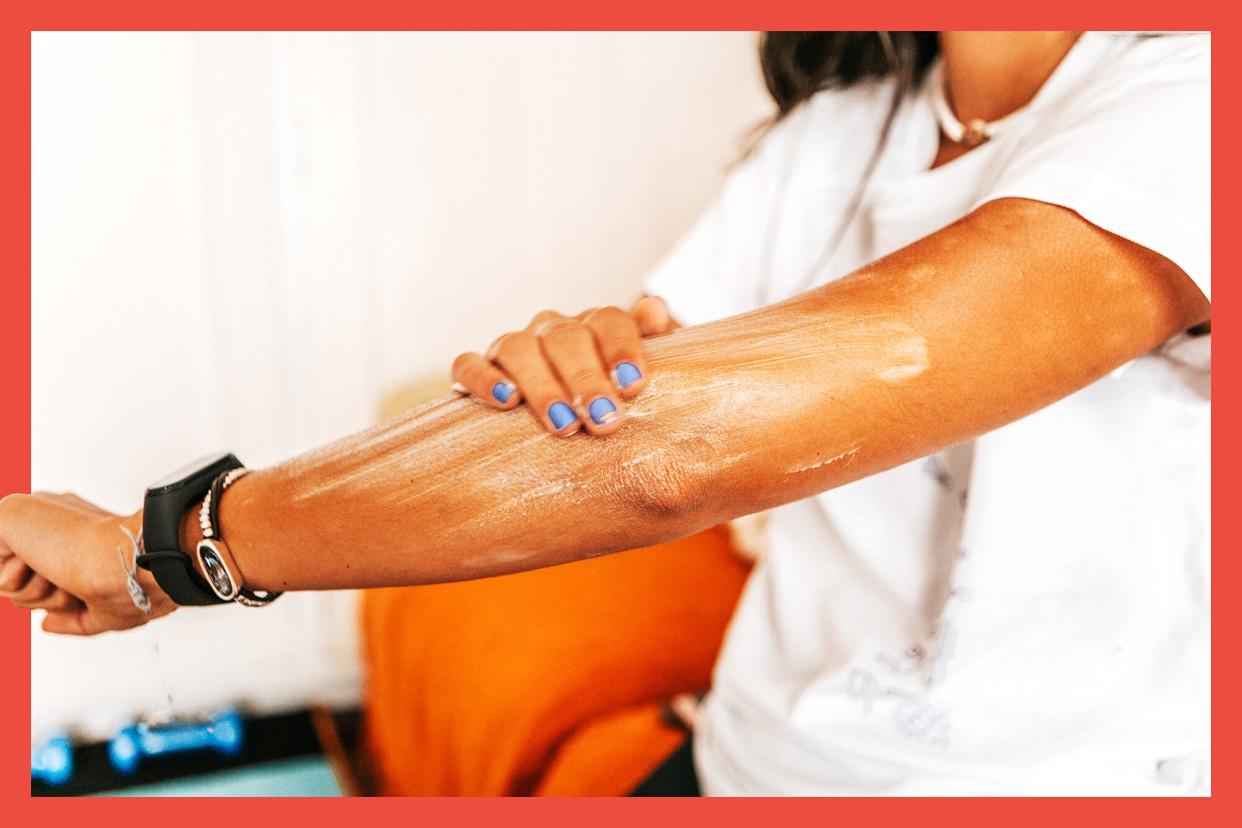I'm a Skin Cancer Survivor & This Is My Best Advice on How to Protect Your Skin

Getty Images / Carol Yepes
When Kristen Oelschlager, RN, chief operating officer at Castle Biosciences, learned about her cancer diagnosis, she was shocked. What she thought was a simple spot on her left temple turned out to be melanoma, a type of skin cancer that can lead to death, according to the National Cancer Institute. Melanoma of the skin accounts for 5.6% of all new cancer cases in the U.S., and an estimated more than 106,000 cases are expected to be diagnosed in 2021. But for Oelschlager, melanoma was the last thought on her mind when a friend asked about the troublesome spot. Oelschlager says, "I thought [my friend] was being a little crazy. I agreed to go have it looked at, mainly to appease her." Luckily, her friend was right to push for the examination.
Related: Lowering Inflammation Might Help Improve Skin Health—Here Are Strategies from Experts
Oelschlager's initial lack of concern is not uncommon when it comes to thinking about skin cancer. A new survey from the American Academy of Dermatology found that "only a third of Americans are concerned about skin cancer despite nearly 70% having at least one risk factor." Risk factors for skin cancer, both non-melanoma and melanoma, include exposure to natural or artificial sunlight for long periods of time, having a fair complexion (e.g., fair skin, blue or green or other light-colored eyes, and red or blond hair), a history of blistering sunburns and more (learn about four research-backed strategies that could help lower your risk of getting cancer).
Despite these risk factors, there are ways to protect yourself from skin cancer, including wearing sunscreen, something Oelschlager was not doing before her diagnosis. Now, Oelschlager says, "I am never without it … ever!" (Check out the best sunscreens to protect your skin from aging, according to dermatologists.) In addition to sunscreen, Oelschlager also takes preventive measures by wearing sun-protective clothing like a hat, sunglasses and rash guards. She'll also do her best to find a shade source when at the pool or the beach (like this beach umbrella; buy it: Target, $40).
Related: I'm Finally Starting a Skin Care Routine—These Are the Products Doctors Told Me to Buy First
That said, Oelschlager's biggest piece of advice for others when it comes to monitoring and detecting possible skin abnormalities: know your body. "It's important to know what's normal for your skin and then to watch for changes or anything new," Oelschlager states. In addition, it also helps to have a buddy, "someone who can keep an eye on the areas you can't easily see, such as your back," Oelschlager attests, as her friend was the one who pointed out the abnormal spot on her temple.
In addition to monthly self-screenings, it's also important to have a yearly skin exam with your dermatologist. According to the Skin Cancer Foundation, these self- and dermatologist-screenings are a crucial step in early detection. These screenings are also important if you've already had skin cancer. While Oelschlager calls herself "fortunate" to have had a curable tumor, she knows that there is a high risk that another melanoma could develop in the future.
Oelschlager's experience has made her a staunch advocate for skin safety and protection in both her professional and personal lives. Currently, she serves as the chief operating officer at Castle Biosciences, a skin cancer diagnostics company that provides personalized, clinically actionable genomic information to enable more accurate treatment plan decisions. Meanwhile, on a personal note, Oelschlager says, "Be a good role model for sun hygiene. Taking care of yourself in this respect is one thing, but being a good role model for your friends, family and especially your kids is just as important!"
Related: What to Eat (and Avoid) for Healthy, Glowing Skin, According to a Dermatologist

